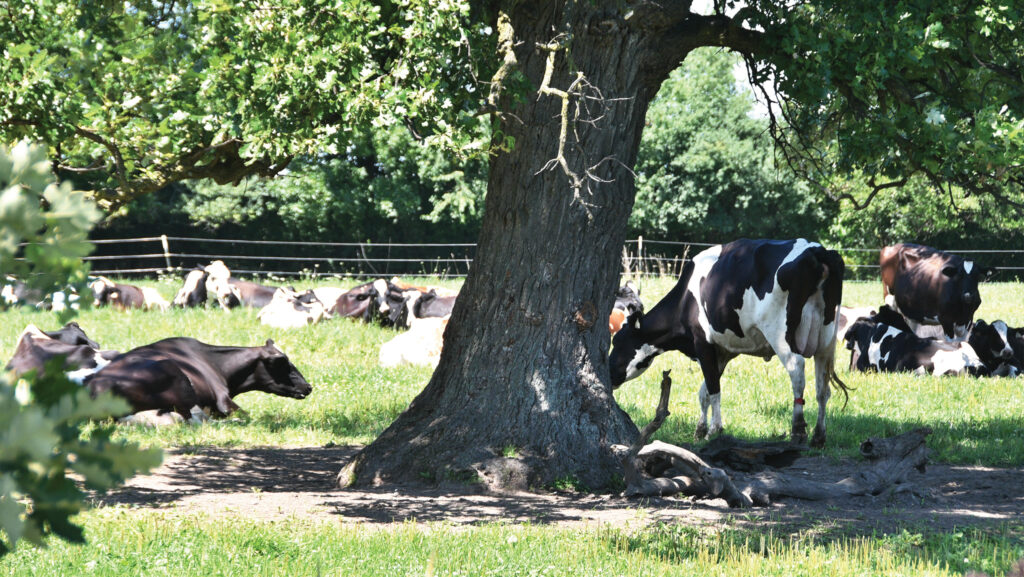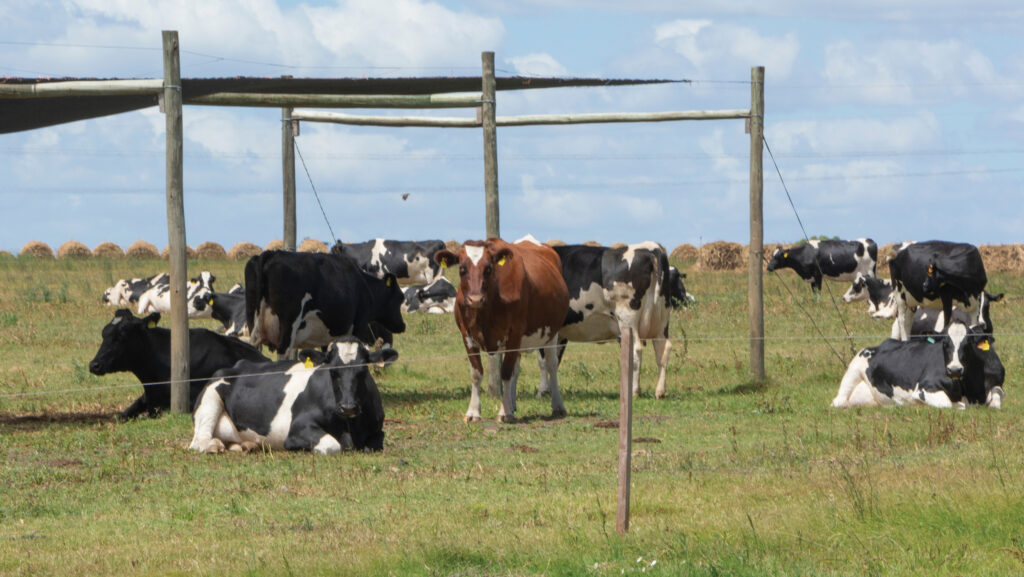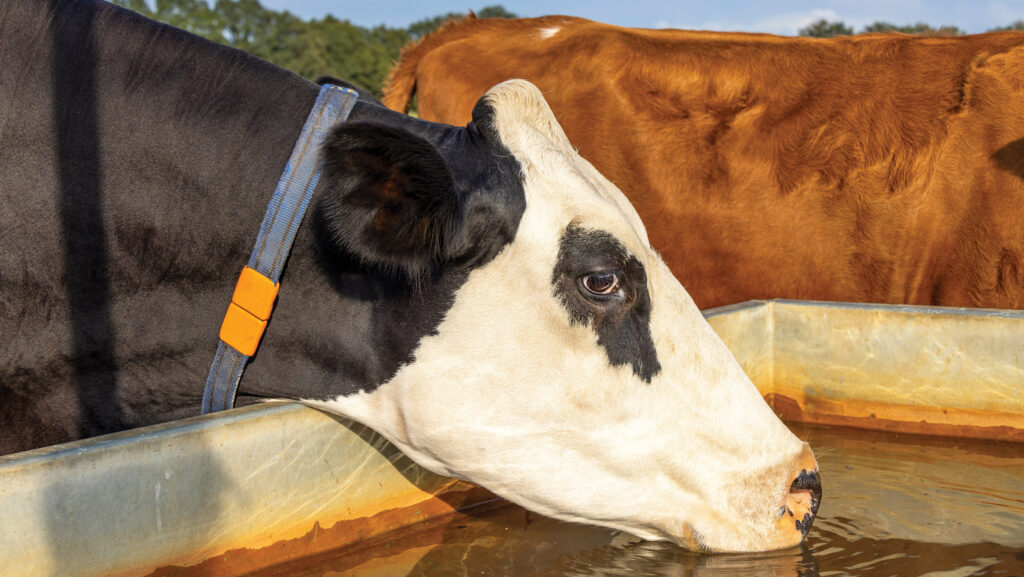How to prevent heat stress in grazing cows
 © Adobe Stock
© Adobe Stock Supplying grazing cows with a “siesta” during periods of high temperatures this summer could help alleviate heat stress and its consequent effects on intakes, lameness, milk yield and fertility.
Vet and consultant Dr Tom Chamberlain of Chalcombe has been monitoring the effects of rising temperatures on dairy cows for a decade.
He reports there is more heat stress in grazing cows because of their exposure to direct sunshine and limited shade in fields.
See also: Heat stress losses top 200 litres of milk a cow, study shows
“We now think that heat stress affects every production stage of the dairy cow and throughout the lactation cycle,” he says, adding that this includes dry cows and foetuses in utero.
Strategies to combat heat stress range from altering milking times and reducing walking distances, to supporting the rumen with feed additives.
However, Tom thinks that prioritising shade and water – whether rotational paddock grazing or set stocking – is easier.
Target shade
The key is to target 4-6sq m a cow of shade, he says.
Traditionally at grass, shade was provided by trees or hedges. In today’s rotational grazing systems, paddocks are invariably divided by electric fencing.
Often this means a grass allocation does not offer any shade, although Tom points out that where there is shade on the track, it is possible to give cows access to this.
Set-stocked fields may still have hedges and trees, but the problem is that when hot, cows tend to huddle underneath one tree.
The result is massive overstocking or “camping”, which in turn leads to mastitis issues.

There should be at least 4sq m of shade for each cow © Adobe Stock
Portable awnings on the market cater for fewer than 50 cows, he says, so housing cows during the day is more practical than trying to supply a canopy at grass.
Most grazing herds (except those tight spring-block units that outwinter) have a shed.
Using this as part of a siesta management programme to house cows between 10am and the end of afternoon milking will reduce exposure to sunshine.
It will also encourage eating time, as they can be buffer-fed in cooler conditions.
Sheds are cooler
“A shed is automatically cooler than outside: the difference in temperature between full sun and shade is about 10C,” Tom adds.
Opening the shed sides will maximise airflow, while collecting-yard sides may need to be more enclosed to provide shade – or fans may need to be installed.
However, for a siesta to work, cubicle management needs to be as good as during winter housing to avoid mastitis and lameness.
Clean, full water troughs are also vital – indoors and out. Water should be below 20C, with enough space for the herd to drink, and within 100m walking distance.
“Cows drink more water and you will get higher peak demands when they come out of shade. Avoid troughs emptying, thirsty cows and damaged troughs.”

© Adobe Stock
Housing cows in summer may seem counterproductive to cheaper milk production from grazed grass.
But Tom says that, with the heat stress season now occurring from early May until mid-September, businesses need to calculate the cost alongside potential losses from heat stress.
In 2022, he says, there were four heatwaves totalling 99 days. Losses in grazing herds ranged from 79 litres to 169 litres a cow and cost to farms from £96 to £180 a cow.
Dr Tom Chamberlain is observing grazing cows in nine dairy farms in England this summer. For the latest data, log onto https://dchs.info/
